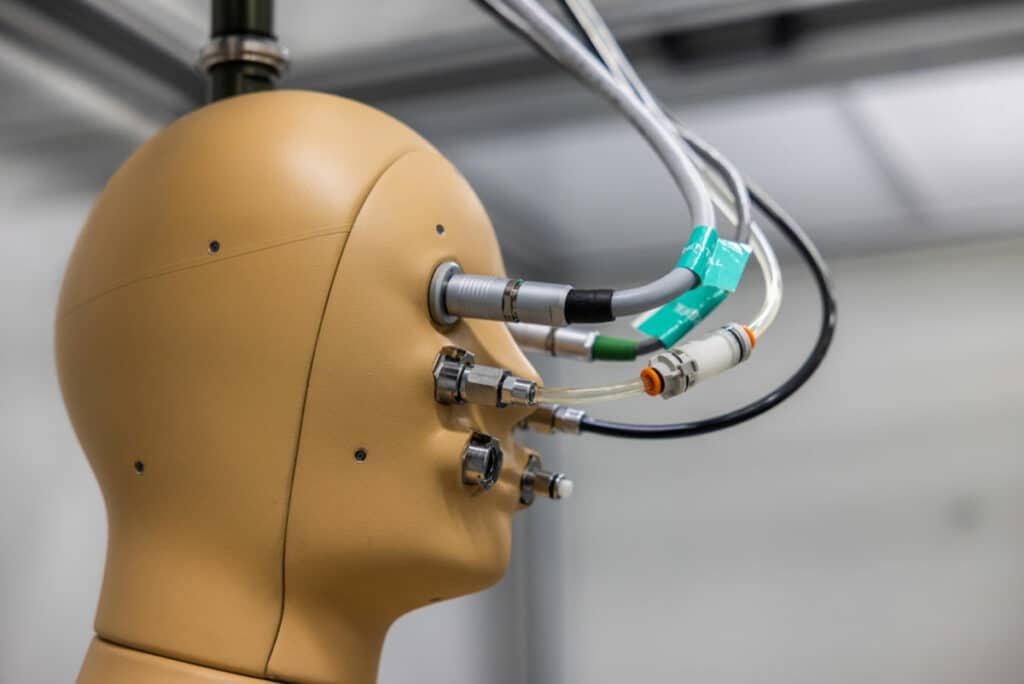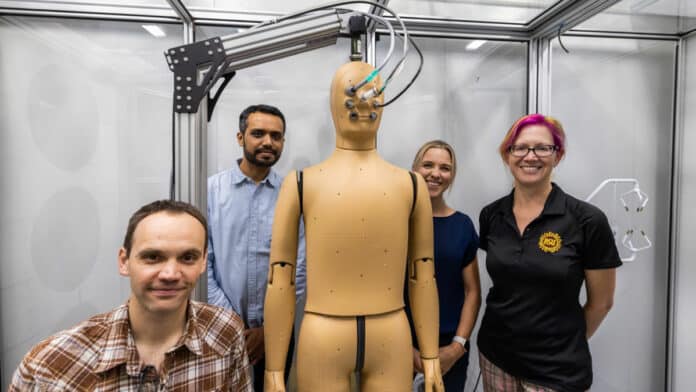Extreme heat kills more people each year in the U.S. than any other kind of natural disaster. In the coming decades, every region in the U.S. is expected to experience higher temperatures and more intense heat waves.
Arizona State University researchers aim to better understand heat stress on the human body and what makes hot weather so deadly. Researchers have used ANDI, the world’s first indoor-outdoor breathing, sweating, and walking thermal manikin robot, and heat chamber to better understand how our human bodies are impacted by heat stress and quantify the risk different environments pose to health.
Custom-built for ASU by the company Thermetrics, ANDI can mimic the thermal functions of the human body. It has 35 different surface areas, all individually controlled with temperature sensors, heat flux sensors, and bead sweat pores.
“ANDI sweats; he generates heat, shivers, walks and breathes,” said Konrad Rykaczewski, principal investigator for a new ASU research project. “There’s a lot of great work out there for extreme heat, but there’s also a lot missing. We’re trying to develop a very good understanding (of how heat impacts the human body) so we can quantitatively design things to address it.”
Currently, 10 ANDI manikins exist around the globe, mostly owned and used by athletic clothing companies for garment testing. But ASU’s ANDI is only one of two used by research institutions, and it’s the first thermal manikin in existence that can be used outdoors, enabled by a unique internal cooling channel.

“You can’t put humans in dangerous extreme heat situations and test what would happen,” said Jenni Vanos, whose research connects extreme heat to human health, specifically for active populations like children, outdoor workers, and athletes. “But there are situations we know of in the Valley where people are dying of heat, and we still don’t fully understand what happened. ANDI can help us figure that out.”
Inside ANDI’s current home, ASU’s newly developed heat chamber, researchers can simulate heat-exposure scenarios from different places around the globe. Called the Warm Room, the heating chamber is outfitted with advanced technologies that control the wind, temperature up to 140 degrees Fahrenheit, and solar radiation. In addition, ASU’s ANDI is the only thermal manikin in the world that is able to be used outside.
ANDI is built with internal cooling channels that circulate cool water throughout its body, which enable the manikin robot to stay cool enough to withstand extreme heat while measuring complex variables that contribute to our perception of heat in different environments – solar radiation from the sun, infrared radiation from the ground and convection from the surrounding air.
Researchers will pair ANDI with MaRTy, ASU’s biometeorological heat robot, to work together and better understand human sweating mechanisms.
“MaRTy can tell us how the built environment modifies the amount of heat that hits the body, but MaRTy doesn’t know what happens inside the body,” said Middel, who studies urban climate and how urban environments influence weather hazards. “MaRTy measures the environment, and then ANDI can then tell us how the body can react.”
The ANDI and MaRTy duo will first be walking around ASU’s Tempe campus together and eventually make trips around the greater Phoenix area to be tested in heat-vulnerable environments, like exposed streets and old mobile homes where the AC went off.
The team believes that the data collected from ANDI and the insights will help design interventions, such as cooling clothes or exoskeletons for backpacks that are designed for cooling support.
